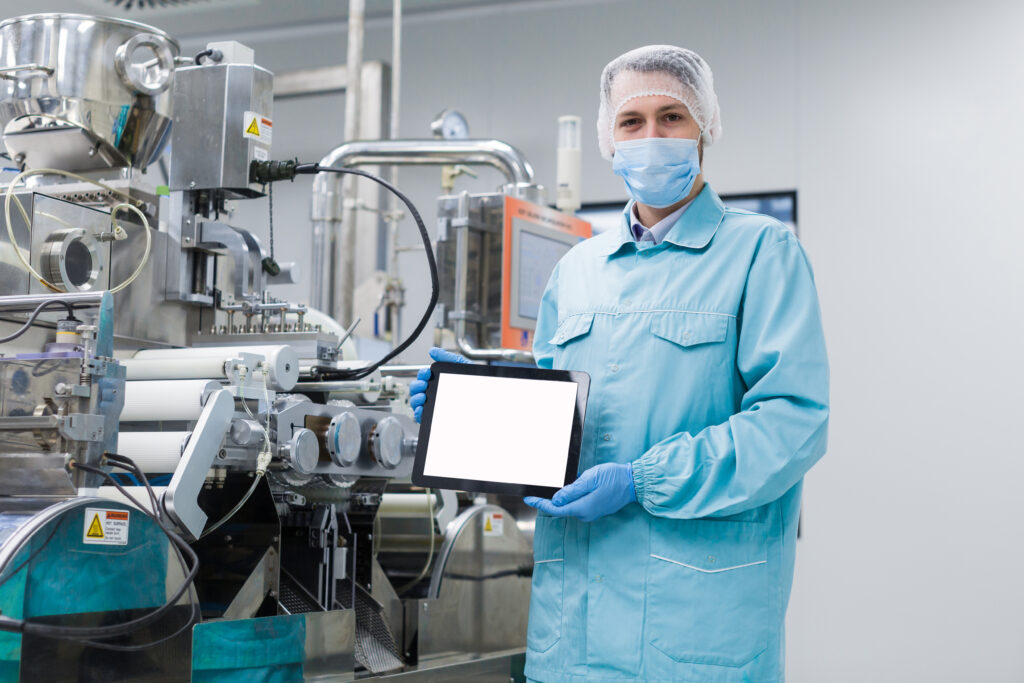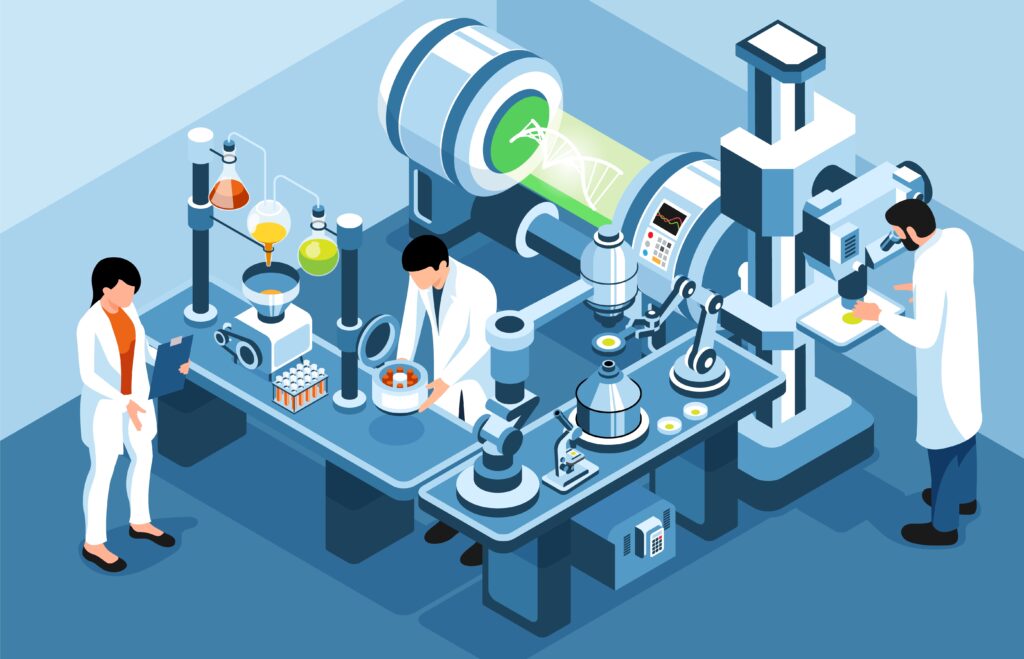In an era where technological advancements are reshaping industries, the pharmaceutical sector is no exception. As the demand for safe, effective, and timely medical products increases, so does the need for reliable manufacturing processes. A critical aspect of these processes is the maintenance of pharmaceutical equipment, which must operate at peak efficiency to ensure consistent product quality and regulatory compliance. Enter AI-powered maintenance solutions—a transformative approach that harnesses the capabilities of artificial intelligence to optimally maintain equipment and enhance reliability.
The Importance of Equipment Reliability in Pharmaceuticals

Ensuring Product Quality
In the pharmaceutical industry, where the stakes are high and regulatory standards are stringent, equipment reliability is paramount. Manufacturing processes must adhere to Good Manufacturing Practices (GMP) to ensure that every product is safe and effective. Any equipment failure can lead to product contamination, production delays, and even costly recalls.
Regulatory Compliance
Pharmaceutical manufacturers operate under rigorous regulations set by authorities like the FDA (Food and Drug Administration) or the EMA (European Medicines Agency). An unexpected equipment breakdown can result in significant non-compliance penalties. Ensuring that equipment operates reliably is essential to meeting these compliance standards.
Cost Efficiency
Unplanned downtime due to equipment failure can significantly impact operational costs. Utilizing AI-powered maintenance solutions not only mitigates the risk of breakdowns but also enables manufacturers to optimize their maintenance schedules, reducing unnecessary expenses related to emergency repairs or extended downtimes.
Traditional Maintenance Practices vs. AI-Powered Solutions

Traditional Maintenance Practices
Historically, maintenance strategies in the pharmaceutical sector have revolved around:
- Reactive Maintenance: Repairs are made after a piece of equipment fails. This approach often leads to extended downtimes and higher costs.
- Preventive Maintenance: Timed maintenance checks and replacements based on manufacturer recommendations or historical data. While proactive, it can still lead to unnecessary downtime or missed failures that happen between scheduled checks.
- Predictive Maintenance: Involves data analysis to predict equipment failures before they occur based on historical trends. While more efficient than reactive and preventive methods, predictive maintenance can still rely heavily on historical data that may not account for sudden changes in usage patterns.
AI-Powered Maintenance Solutions

AI represents a paradigm shift in how maintenance can be conducted:
- Real-time Monitoring: AI systems can integrate with IoT devices installed on equipment to collect real-time data, analyzing performance metrics and operational conditions continuously.
- Machine Learning Algorithms: Through machine learning, AI tools can identify patterns and anomalies in operational data that humans might overlook. These patterns can help predict failures with remarkable accuracy.
- Automated Maintenance Scheduling: AI can optimize maintenance schedules based on usage patterns, environmental conditions, and historical performance data, leading to a tailored approach to equipment reliability.
- Root Cause Analysis: Instead of merely addressing symptoms of equipment failure, AI systems can aid in performing a root cause analysis, helping organizations understand why equipment has failed and how to prevent future breakdowns.
Implementation of AI-Powered Solutions in Pharmaceutical Facilities
Integrating AI-powered maintenance solutions requires a strategic approach to ensure success across the organization.
Step 1: Assess Current Maintenance Practices
Before deploying AI technologies, pharmaceutical companies must assess their current maintenance practices. Identifying strengths, weaknesses, and potential areas for improvement is essential to tailor solutions that meet both immediate and long-term goals.
Step 2: Data Infrastructure Setup
AI requires robust data infrastructure to function effectively. Companies should ensure they have the equipment monitoring capabilities and data collection systems installed. This may involve upgrading existing machinery with IoT sensors or implementing new reporting systems for better data acquisition.
Step 3: Selecting Appropriate AI Tools
Choosing the right AI tools is crucial. Various platforms offer AI capabilities focused on predictive maintenance, and evaluations should include:
- Scalability: Can the technology grow with the organization’s needs?
- Compatibility: Will it integrate seamlessly with existing systems?
- Usability: Is the interface intuitive for maintenance personnel?
Step 4: Training Personnel
Implementing AI solutions is not just a technology upgrade; it also requires training personnel. Workers must be familiar with new systems, understand how to interpret AI-generated insights, and learn how to act on those insights proactively.
Step 5: Continuous Monitoring and Improvement
AI implementation is not a one-time event but a continuous process. By regularly monitoring performance metrics and collecting feedback from personnel, organizations can fine-tune their AI systems for ever-better performance.
Benefits of AI-Powered Maintenance Solutions
1. Enhanced Predictive Capabilities
AI can analyze vast quantities of data to detect anomalies and predict failures well in advance. These capabilities go beyond traditional predictive maintenance, as AI can utilize real-time data and adjust its predictions based on operational changes, leading to proactive rather than reactive measures.
2. Improved Resource Management
AI solutions can help companies optimize their resource allocation, ensuring that maintenance teams are not stretched too thin and that equipment is serviced efficiently.
3. Increased Equipment Lifespan
By predicting failures before they happen, AI not only minimizes unplanned downtime but also extends the lifespan of the equipment. This longevity translates into cost savings over time.
4. Reduction in Operational Costs
With a more efficient maintenance strategy, companies can significantly reduce operational costs associated with frequent repairs, unplanned downtimes, and compliance issues.
5. Foster a Culture of Data-Driven Decisions
Integrating AI-powered solutions encourages a culture where decision-making is based on data insights rather than intuition, enhancing operational efficiency within pharmaceutical facilities.
Challenges and Considerations in Implementation
While AI-powered maintenance solutions present numerous advantages, organizations must also consider potential challenges and ensure thoughtful implementation.
Data Privacy and Security

AI systems require access to sensitive operational data, raising concerns about data privacy and security. Organizations must develop robust cybersecurity protocols to protect their data from breaches.
Integration with Existing Systems
Legacy systems can pose integration challenges. Pharmaceutical companies must assess the compatibility of potential AI solutions with their existing operational setup.
Change Management
Transitioning to an AI-driven maintenance culture can meet with resistance from staff who are comfortable with traditional practices. Companies must ensure that they provide ample training and communication around the benefits of the transition.
Continuous Adaptation
The pharmaceutical landscape is continuously evolving; therefore, continuous adaptation of AI systems based on industry advancements and regulatory requirements is necessary for sustained success.
Conclusion
As the pharmaceutical industry embraces technological advancements, AI-powered maintenance solutions are crucial for ensuring equipment reliability. By employing real-time monitoring and machine learning, companies can improve operational efficiency, product quality, and regulatory compliance. This shift from reactive to proactive maintenance minimizes downtime and extends equipment lifespan.
Despite challenges in adoption, the long-term benefits far outweigh initial hurdles. In a sector where patient safety is paramount, AI-driven maintenance represents a commitment to excellence and continuous improvement. Embracing these solutions will enhance reliability and innovation, benefiting both manufacturers and consumers.
